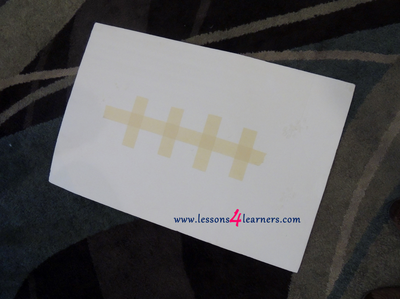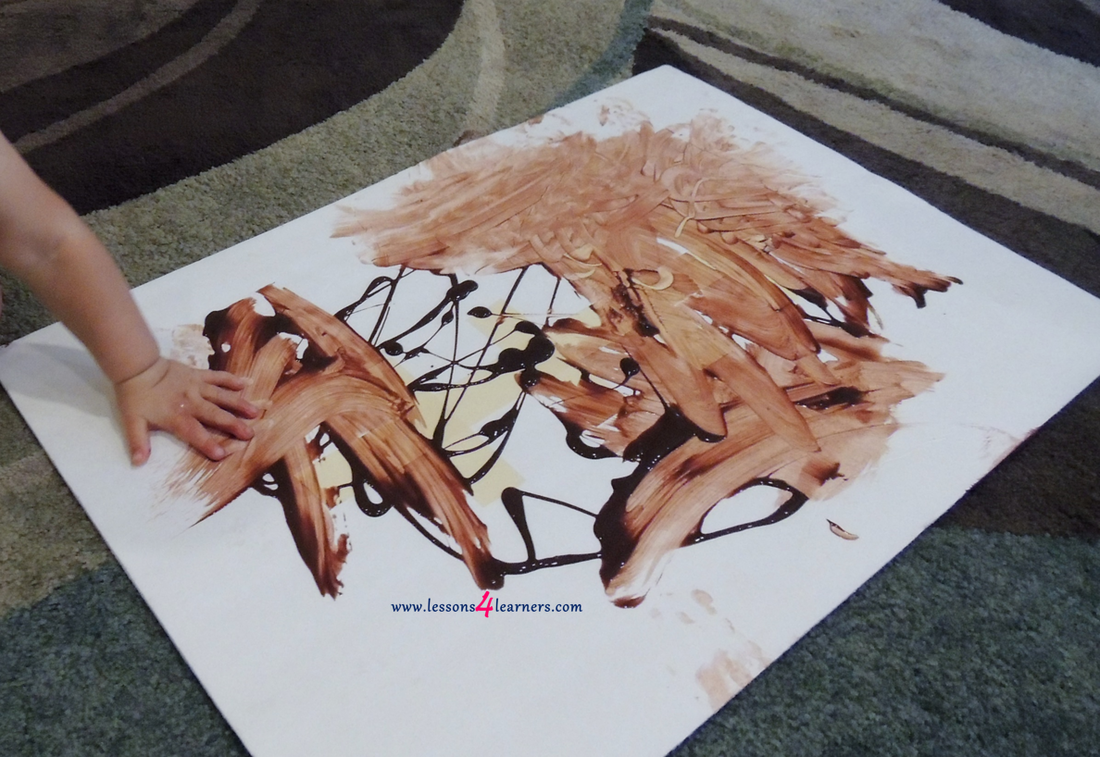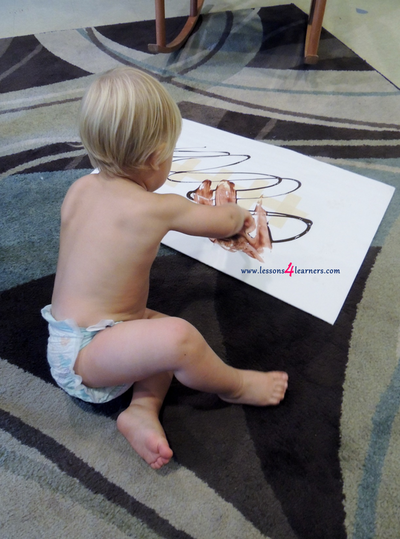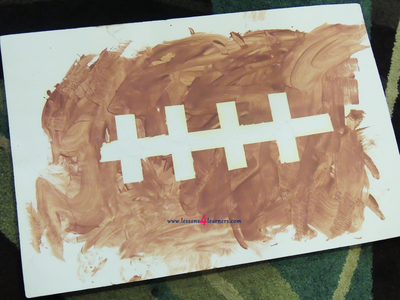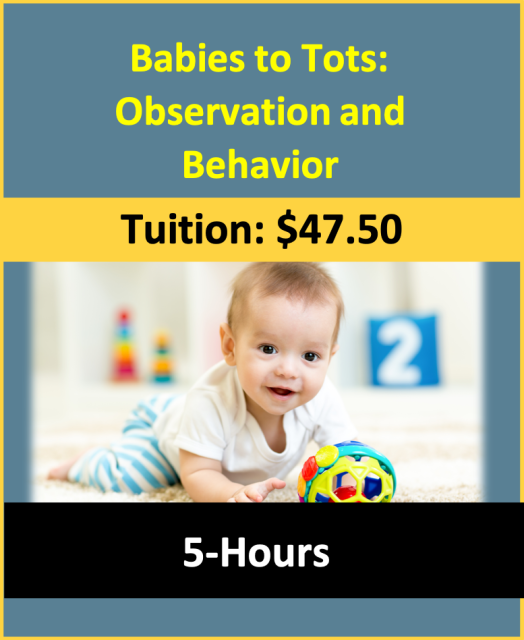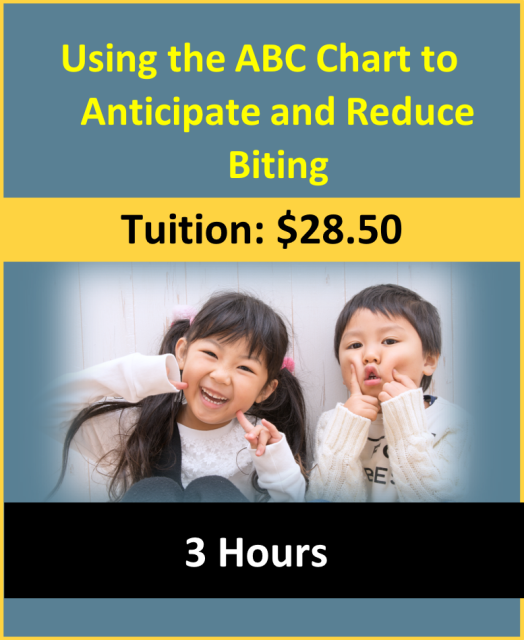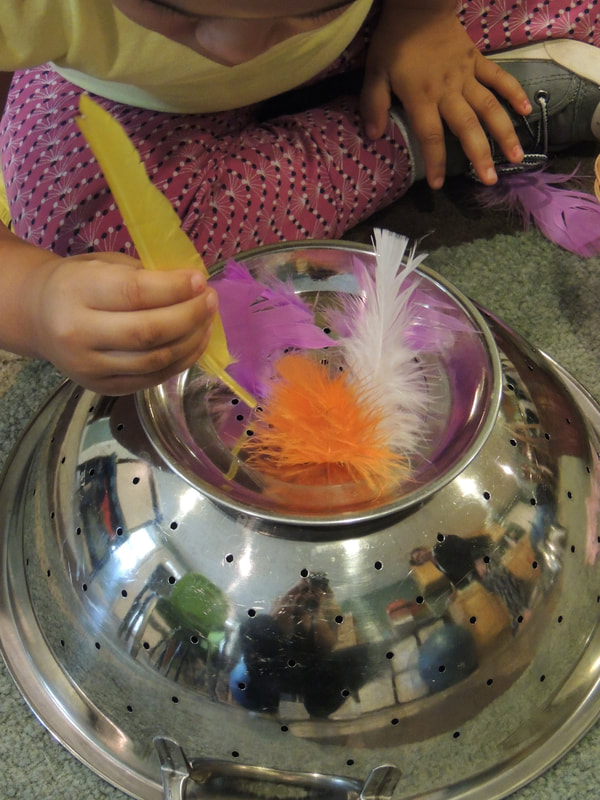Tape Resistant Football Painting
Lesson Plan:
|
Activity:
Tape Resistant Football Painting
Lesson plan developed by Ms. Erika Geelhoed, BA Ed
Age Group:
* Lesson plan objective and assessment can be adapted to use this activity with toddlers or preschoolers.
Objectives:
Children will:
|
|
II.7.4b
I.2.3a
Materials:
|
Procedure:
- Prepare for the activity by placing the painters tape on the poster board in lines that resemble the laces on a football
- Introduce the poster board and paint to the children, showing them how to paint with their hands.
- Give the children adequate time to paint.
- As they are creating, introduce new vocabulary words that relate to the activity.
- Wash hands with the children, explaining steps as you go.
- Allow the poster to dry before removing tape.
Assessment:
- Observe and record the children’s reaction to the paint. Did they attempt to converse with you or repeat any new vocabulary words or sounds during the activity?
Click on the course icon for enrollment information.
8 Tips for Creating Practice for Pincer Grasp
|
12th August 2014
by guest contributor Kathy Lasher Pincer Power Problems!
Hannah cries in frustration as she attempts to picks the cheerios out of the dish. Mom rushes over, “Hannah I’ll help you with that. Julie struggles with buttoning her shirt and being late for work, Mom hurries over and finishes for her. Much as we like to help our children sometimes they will need to be left unassisted in order to learn a process. The pincer grasp is learned somewhere between the ages of 9 – 12 months and is extremely important. Your child will use that movement the rest of his/her life. From something as simple as eating with a utensil, to putting on clothes with buttons, sewing with a needle and thread or typing on a computer. Some children learn this movement slower than others due to either being *born prematurely, having vision impairments or perhaps a developmental delay. Sometimes though people are too quick to find a problem with the child when the real problem could be…you.
|
In the above scenario the mom hurried to help Hannah as soon as Hannah got frustrated. Children need the opportunity to learn and practice is necessary. Trial and error. How often have you tried to learn a complicated process and gotten frustrated? Try experimenting with a ‘hands off’ method to enable your baby the time to practice and process the new skill. Just because she cries or bangs her hands in frustration does not mean you need to intervene. Wait and watch. You may see her angrily throw a fit, then calm down and approach the task again and possibly with greater success this time.
8 Tips for Creating Practice for Pincer Grasp
- Place blueberries or some small tasty tidbit into a small muffin tray so she will be forced to use her thumb and forefinger to pull them out to eat.
- Provide small blocks, 1 inch size for them to stack and unstack.
- Encourage them to put items into a container and let them dump them back out.
- Push pegs into play dough and take them out again. (Observe they do not put small objects into their mouth)
- Some people suggest cutting a couple holes in a small sock and put the thumb and forefinger through, so the child must use the pincer grasp for activities.
- Pipe cleaners poked into a colander.
- Use the cardboard from a used paper towel roll and tape it onto the wall in upright position – then have Hannah put small items through and watch them fall out below.
- Empty a tissue box and fill with smaller items for her to reach in and retrieve.
